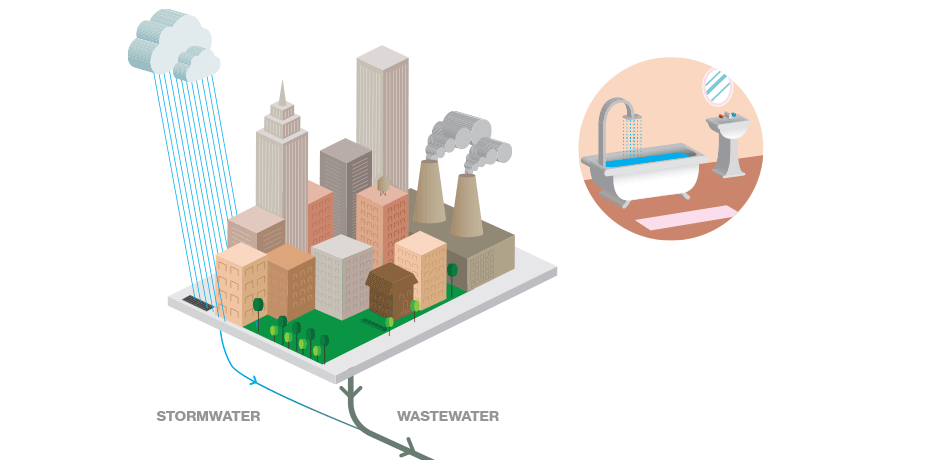Affordable Solutions for Large-Scale Waste Water Treatment Facilities
Strategic Approaches to Enhance Drainage Treatment Efficiency and Lessen Environmental Influence
In the realm of waste water therapy, the mission for boosted performance and minimized environmental effect is a perpetual challenge that requires calculated options. The integration of sophisticated treatment innovations, energy-efficient procedures, resource healing methods, enhanced nutrient elimination strategies, and clever monitoring and control systems stands for a multifaceted framework for addressing these pressing worries.
Advanced Therapy Technologies
Innovative membrane layer filtration systems have changed sophisticated wastewater treatment processes, substantially improving the removal of pollutants. This innovation has actually proven to be very efficient in eliminating a vast range of pollutants, including pharmaceuticals, heavy steels, and natural compounds, which are frequently testing to remove through standard therapy approaches.
Moreover, membrane layer filtration systems offer many advantages over traditional therapy approaches. They call for much less area, generate higher-quality effluent, and are more immune to changes in influent water quality. In addition, these systems are highly flexible and can be quickly integrated right into existing treatment plants or made use of as standalone units for decentralized applications. As the demand for tidy water remains to rise, the fostering of advanced membrane layer filtration technologies is vital to make certain lasting and effective wastewater therapy methods.
Energy-Efficient Processes
The integration of energy-efficient processes in wastewater treatment systems is vital for maximizing source use and minimizing functional costs. One crucial method to enhancing energy effectiveness in wastewater treatment is the utilization of advanced oygenation systems, such as fine bubble diffusers or surface area aerators, which can boost oxygen transfer performance and lower energy intake.
Additionally, enhancing procedure control and automation via the usage of innovative sensing units and keeping an eye on systems can enhance general energy effectiveness by adjusting procedures in real-time based upon actual need and conditions. Applying energy audits and regularly keeping track of energy efficiency signs are important methods to recognize locations for improvement and track energy-saving campaigns effectively. Generally, the adoption of energy-efficient processes in wastewater therapy not just profits the setting however likewise adds to long-term expense financial savings and operational sustainability.
Resource Healing Techniques
With an emphasis on maximizing resource usage and sustainability in wastewater therapy systems, the execution of source recovery methods emerges as a crucial facet in improving operational effectiveness. Resource recovery approaches in wastewater treatment involve the identification and extraction of useful resources from the waste stream, consequently transforming what was once thought about waste into a valuable asset. By executing resource recuperation techniques such as nutrient elimination and recovery, energy generation from natural matter, and the manufacturing of reusable water, wastewater treatment plants can reduce environmental impact while making the most of performance.

Enhanced Nutrient Removal Strategies
Implementing sophisticated nutrient elimination methods is necessary for enhancing the efficiency of wastewater treatment systems. Boosted nutrient removal plays a critical function in minimizing the environmental impact of treated effluent released right into water bodies. Among the key strategies made use of for improved nutrient removal is the process of biological nutrient removal (BNR), which involves the removal of nitrogen and phosphorus through biological processes. This can be attained via the use of specialized microbes that can convert nitrogen compounds into inert nitrogen gas via denitrification, and accumulate phosphorus within their cells via a process called boosted organic phosphorus elimination (EBPR)

In addition to BNR, progressed therapy approaches such as membrane layer bioreactors (MBRs) and constructed wetlands can likewise be used to improve nutrient removal performance. By including these advanced nutrient elimination strategies right into wastewater therapy districts, systems and sectors can successfully lower nutrient contamination and shield the atmosphere.
Smart Surveillance and Control Solution
Utilizing sophisticated modern technology, the integration of wise monitoring and control systems transforms the functional effectiveness of wastewater therapy facilities. These systems include sophisticated sensing units and data analytics to continuously monitor key criteria such as pH levels, turbidity, liquified oxygen, and circulation prices in real-time. By accumulating and evaluating this data, drivers can gain valuable insights right into the performance of the treatment that site processes, allowing aggressive modifications to optimize therapy performance.
Smart monitoring and control systems also sustain remote surveillance capabilities, enabling drivers to gain access to real-time information and control features from off-site locations. This remote accessibility enhances operational versatility and responsiveness, enabling quick interventions in case of system malfunctions or fluctuations in influent high quality. In addition, the predictive upkeep capacities of these systems assist avoid equipment failures and reduce downtime, inevitably improving the total integrity of wastewater treatment operations (Waste Water Treatment).
Conclusion
To conclude, tactical methods such as sophisticated therapy technologies, energy-efficient processes, source recovery techniques, improved nutrient elimination strategies, and wise monitoring and control systems play a vital duty in improving wastewater treatment effectiveness and lessening environmental effect. By applying these techniques, wastewater therapy plants can boost their total performance, decrease energy consumption, recover important resources, and guarantee conformity with ecological policies. These methods are vital for sustainable and reliable wastewater monitoring methods.

In final thought, tactical approaches such as innovative treatment innovations, energy-efficient procedures, source recuperation techniques, improved nutrient removal methods, and clever surveillance and control systems play a crucial role in enhancing wastewater treatment performance and click over here now decreasing environmental effect.